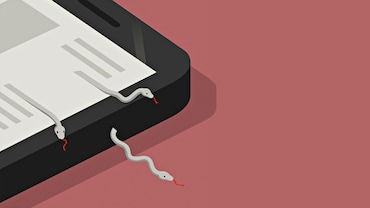- HOME
- /
- Conversations
- /
If Not Now, When?
As the country and its healthcare infrastructure reels from its biggest public-health crisis, what can we do?

Omnishambles. That is the only word for COVID India 2021. There is no point in stating the obvious, so I’ll pitch my voice above the panic and chaos to ask: What will we do about it?
A replay of 2020 just won’t work. Our strategy last year, like the rest of the world’s, was along trusted lines of quarantine and isolation. Trusted, that is, to fail. It could not, would not and did not contain a respiratory virus in 2020—just like it could not, would not and did not contain the Black Death in 1385, when this hoary strategy was thought up. Yes, travel is faster in the21st century than it was in the 14th, but there is more than that to account for the rapid spread of SARS-CoV-2. It is worth looking at these hidden factors now, and to find ways to redress them. The past year proved how useless our efforts to contain this disease have been. Isn’t it time for ingenious innovation?
The terms ‘virus’ and ‘disease’ are not synonyms. But in common parlance, they are confusingly interchangeable. Viruses are ubiquitous, and it is naïve to suppose that you can block them out. It is impossible to contain a virus. It is, however, very possible to contain the disease.
The disease is our response to infection by the virus. Infection can pass unnoticed. COVID jargon has bilked us from understanding its vocabulary.

We declaim in airy terms like ‘waves’and ‘curves’ but refuse to admit how predictions all through 2020 fell flat.They were based on a presumed knowledge of the dynamics of this disease. A hollow presumption, as we are only now beginning to understand how this disease works.
It is possible to be infected and not experience disease—‘asymptomatic.’Infection may cause a mild illness, experienced as fever, cough or abdominal discomfort and diarrhoea. It may also cause severe illness that can kill.
How is India doing?
Last year’s case fatality rate was 1.3 per cent in March 2020. This year, it is relatively lower: 0.87 per cent. Daily deaths are more worrying: 3,619 per day across the country as of 5 May—and predicted to rise. The ‘number of cases’ is fallacious. Testing is sporadic,and as it becomes more frequent, more ‘positives’ are recorded. Not all ‘positives’ are sick. What we need is more transparency about the numbers of severe illness. This perilous state is one we have brought upon ourselves by ignoring key factors that spell the difference between life and death. Those key factors are entirely within our control.
I spent 2020 the way most doctors did. I read, questioned and tracked down every bit of research as it emerged. It was evident COVID-19 was more than the devastating epidemic pneumonia that emerged in Wuhan in December 2019. We knew all about the virus, but were learning something new about the disease each day. Although its primary focus was the lungs, every body organ seemed vulnerable. The damage was caused by uncontrolled and uncontrollable inflammation, the result of a disordered immune response to SARS-CoV-2. It was amply evident that COVID-19 was not just about the virus.It was about the coronavirus and us. People whose health was impaired by conditions with a disordered inflammatory process were most severely affected by COVID-19. So too were the elderly.Partly because older people have a higher proportion of inflammatory diseases and also because ageing itself causes a heightened inflammatory response.
What were these diseases that increased vulnerability to COVID-19?They are so common we call them ‘lifestyle’ diseases. Heart, liver, kidney disease, diabetes, arthritis—and their common denominator, obesity.Over the past year, we have reduced these to a convenient label: comorbidities. Unfortunately,that’s all it is, a label.
Common sense dictated that medical attention for these illnesses must be prioritized. We didn’t do that. Instead,policy decisions herded us into a Planet Pajamaville to augment these illnesses from a lack of exercise and unwise food habits. The result? COVID-19 today has many more sitting ducks in its cross hairs than it did last year. Most deaths this year are from this vulnerable group. USA’s CDC analysis shows 94 per cent of people who died of COVID-19 had at least one comorbidity.Cohort studies from the UK show a linear increase in people with a high Body Mass Index, especially among young victims of COVID-19.
In January 2020 we noticed the striking association between air pollution and the outbreak of COVID-19 in Wuhan. The skies cleared and at the same time the epidemic retreated.
COVID-19 is primarily a respiratory disease. The lungs are the killing field. To anybody who studies air pollution, it was evident that serious disease was linked to a poor AQI. It was an inconvenient truth and was predictably ignored. Only recently have scientific papers explored and validated this observation. India has the world’s worst AQI and we have persistently,pathologically, ignored it.Physical distancing is the only measure that has helped so far, and what have we done? Yes, we have masks, but what about propinquity? Can you ensure a 6-foot-gap in a panicked crowd at a railway station? At political rallies? At the mêlée during the Kumbh Mela? All these are super spreader events: not only is the virus transmitted madly,it also mutates exuberantly into more infectious avatars. Public gatherings in the time of COVID-19 have put millions of lives at risk. They are crimes against humanity.There is a lot each of us can do to reverse this situation into a more manageable one. Start with the understanding that our body is equipped already to fight off COVID-19 if we don’t meddle with its strengths. We can do that by cleaning up the air in our immediate vicinity. Stop smoking.Do not permit bonfires of garbage.
The airway has a wonderful defence system in place. Mucus entraps particles and sweeps them upwards and away from the lung by the ceaseless activity of microscopic brushes called cilia.This partnership must be allowed to function undisturbed. Mucus does not have to be hawked and spat, it has a job to accomplish. It must be kept supple and fluid by good hydration. Cilia are temperamental—they function best at body temperature. Inhaling steam injures them. Yet most people fumigate their airways with hot steam and smoke from various gums rich in irritant terpenes. Agarbatti, camphor,eucalyptus—the list is endless. Steer clear of them all.
Immunity is more easily spelt than described. It cannot be ‘boosted’ by nostrums domestic or international.But commerce is booming—from detergents that promise to wash away the virus to black market drugs to oxygen to ghoulish gouging at crematoria.There is always big money in disaster Add to this medical misinformation. There is no drug that works against COVID-19, no anti-viral tablet, no homeopathic or Ayurvedic potion, no amount of tulsi, turmeric or cow’s urine.
Luckily, we have vaccines with a good record of preventing serious illness. Till everyone of us is vaccinated,we must think our way out of this crisis.Governments must enlist the armed forces—not to menace, but to help in humanitarian work. Begin with the dignified disposal of the dead.
Treatment must be decentralized.Unnecessary drugs are life-threatening, and to date, not a single drug has any effect on COVID-19. And certainly asymptomatic ‘positives’ don’t need any medication.
Panic and terror shift the body’s response to a stance that lowers immunity, so we must arm ourselves with intelligence instead. We must think ourselves out of this crisis. Infection may be inevitable, but illness is not. Till the vaccine reaches all of us, healthy living is our best defence. If not now—when?
Surgeons Kalpana Swaminathan and Ishrat Syed write together as Kalpish Ratna. Their book A Crown of Thorns—The Coronavirus & Us was publishedin August 2020. A Pandemonium in Pakshila is due later this year.






